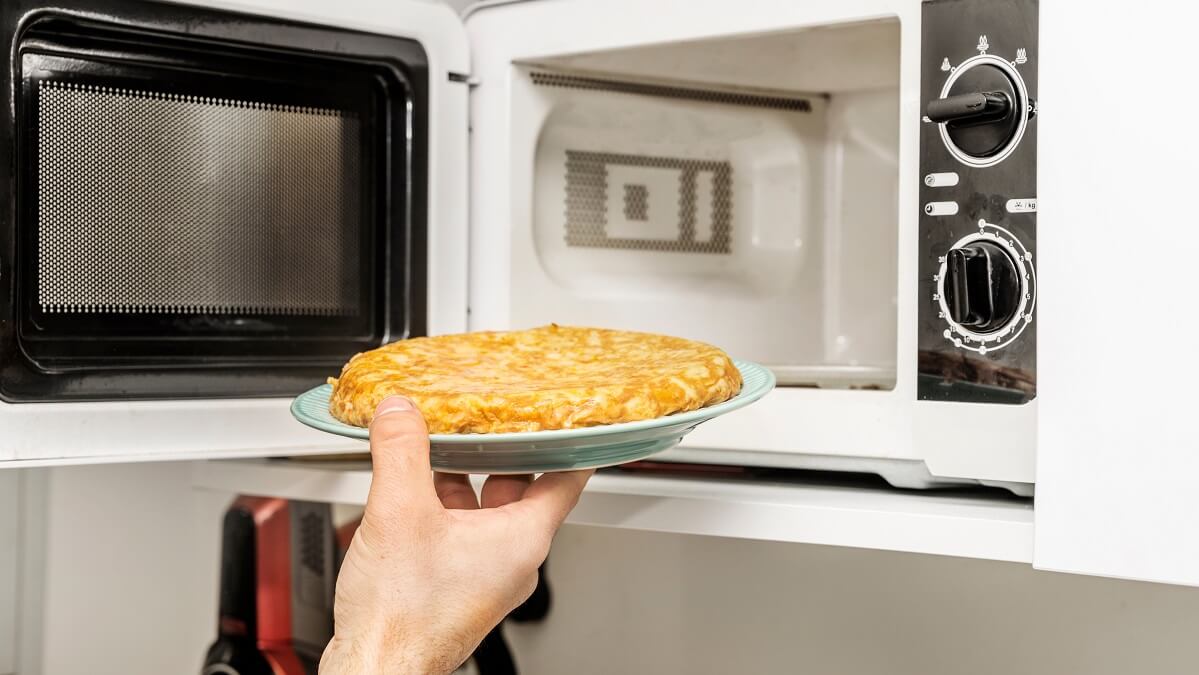Who remembers when microwaves first came out and we were encouraged to cook everything in the new gadget from Sunday roasts to cakes? I’ll put my hand up.
I’m not saying we didn’t try, but there was a steady decline from wrangling whole meals out of the microwave to what they are generally used for today, which is cooking simple food and reheating.
And one of those simple foods is eggs. Here’s our guide to get the best out of your microwave and your eggs.
Scrambled
If eggs are microwaved in our house, this is how. The great thing about microwaved scrambled eggs is there are no awful egg-encrusted saucepans to clean up afterwards.
Whisk at least two eggs together with a teaspoon of milk or water and salt and pepper to taste. Water will create a fluffier result and milk a richer flavour.
Add any flavour treats such as ham, chives or chopped shallots at this point.
Microwave on 70 per cent or the second highest setting for one minute then stir with a fork and microwave for 20 seconds, repeating that last step until the eggs are cooked to your taste.
If you are adding smoked salmon or cheese, stir it in about halfway through.
At this point they are the temperature of lava, so set them aside for at least one minute before you tuck in.
You can use specialist egg cookers, but we use nothing more than a ceramic bowl and no-one has died yet.
Poached
Poaching eggs well is hard. Done poorly and they are either a watery mess or rock-solid discs, done well and it’s hard to have them any other way.
For microwaving poached eggs, fill a microwave safe mug or cup with cold tap water, add a splash of white vinegar if available, crack one egg into the cup, prick the yolk with a skewer so it doesn’t explode. Cover with cling film or a saucer.
Microwave on high for 30 seconds, check to see if it’s cooked to your liking, if not, continue to cook it on high for 10-second intervals until it’s done.
Use a slotted spoon to carefully remove it from the mug and place it on a paper towel to absorb the water and then serve as you would like.
It’s a good idea to let the eggs come to room temperature before you start, and if you have trouble with them exploding, perhaps lower the power setting or cook for shorter bursts.
Hard boiled
Hard-boiled eggs are versatile little gems. Eat them cold or hot, on their own or part of another dish. They are hard to beat for convenience.
In the microwave, they may require some experimenting to get it right time-wise, depending on how you like your eggs done, but there are some basic rules to get you started.
There are generally two schools of thought to avoid explosions. You can prick the end with the air sac (generally the fat end) but that’s fiddly. Easier, is to just add half a teaspoon of salt per egg and be done with it.
Place two eggs in a microwave-safe dish and then pour enough warm water to fill the container about two centimetres above the eggs.
Microwave on high for four minutes, add 30 seconds for any extra eggs. Let them sit for one minute then microwave for another four minutes.
Let them sit in the hot water for two to three minutes for runny yolks, six to seven minutes for medium boiled and up to 10 minutes for hard-boiled eggs.
Fried
Strictly speaking fried eggs are, well, fried, but you can make a decent ‘fried-style’ egg in the microwave.
Select a flat-bottom bowl if possible and add a small amount of melted butter or oil.
Crack one or two eggs into the bowl, making sure to prick each yolk so it doesn’t explode.
Season with salt or pepper to taste.
Cover with a plate or cling wrap, then microwave on high for 30 seconds per egg. If you want them over-easy, turn them at this point,
Check their ‘doneness’ and continue microwaving at 10-second intervals until they are to your liking.
Are eggs a go-to meal for you? What’s your favourite egg-based recipe? Share it in the comments section below.
Also read: Eggscellent tips on how to peel eggs

